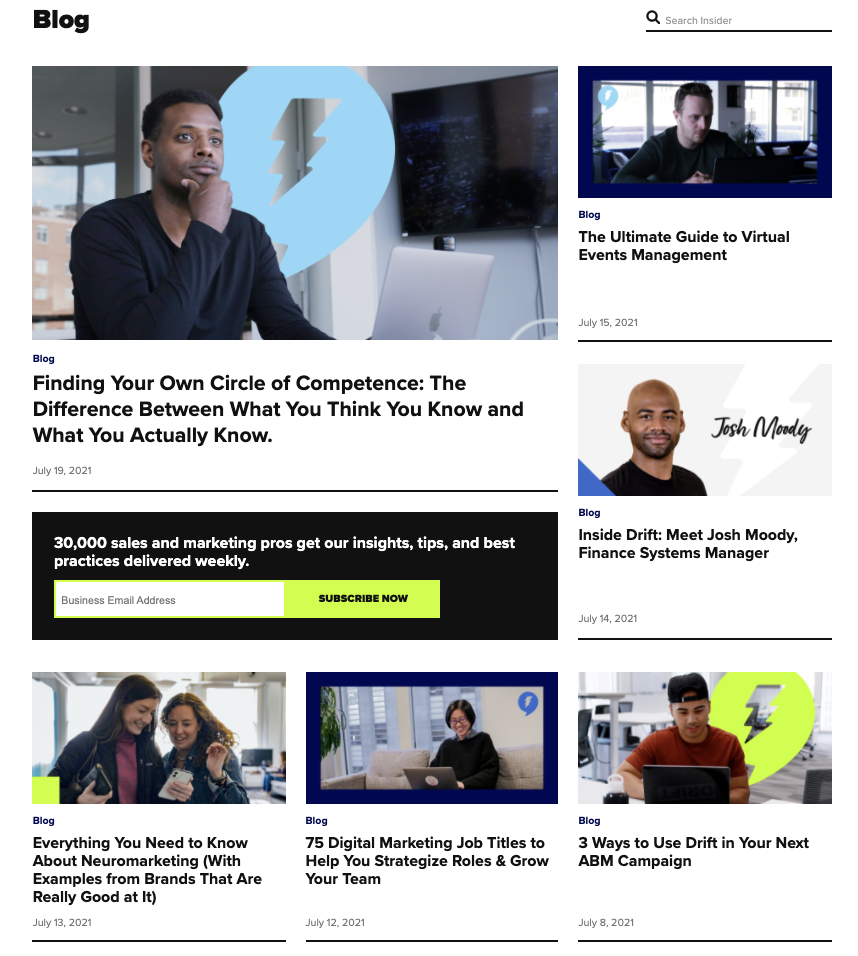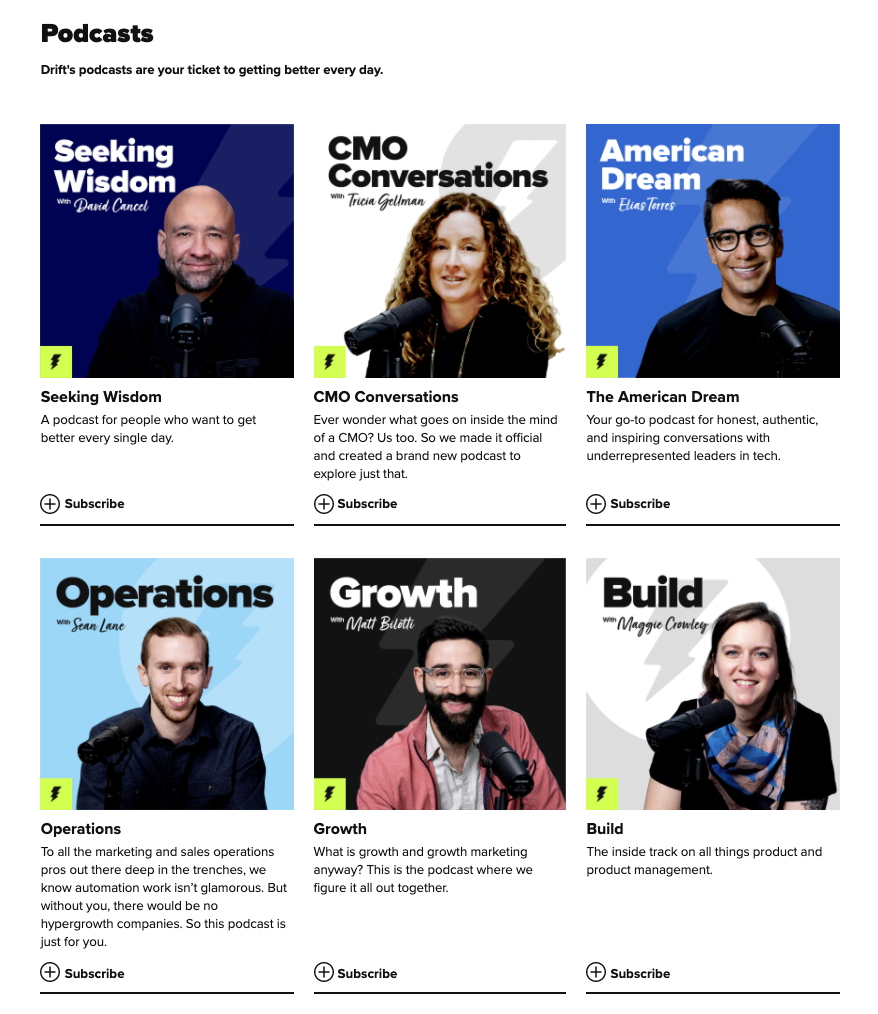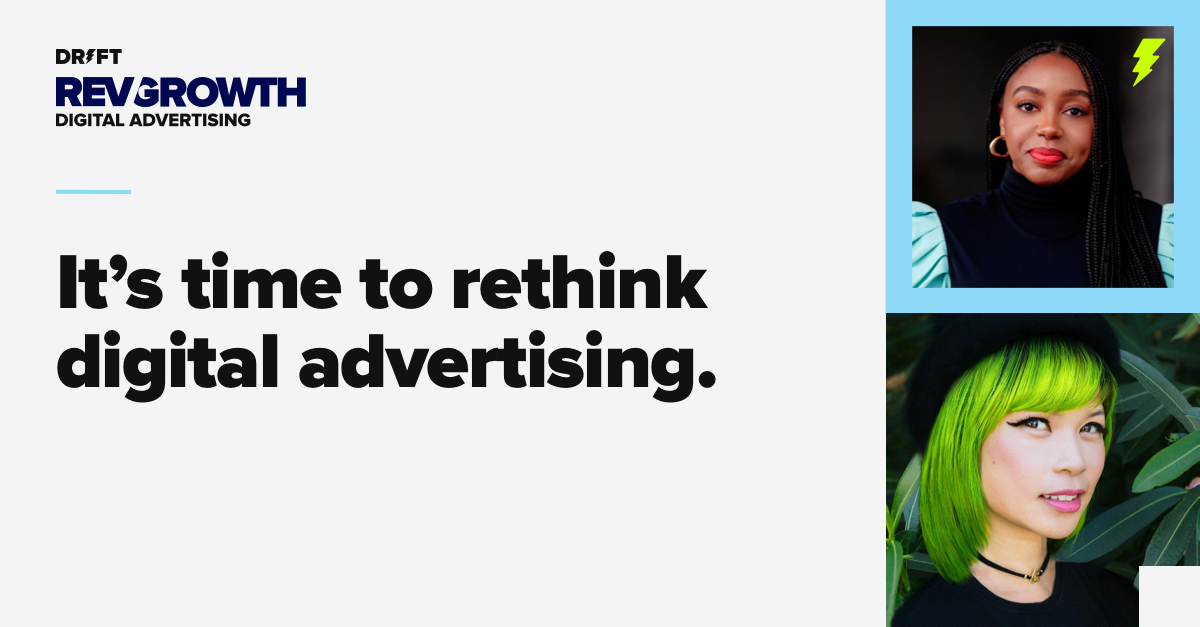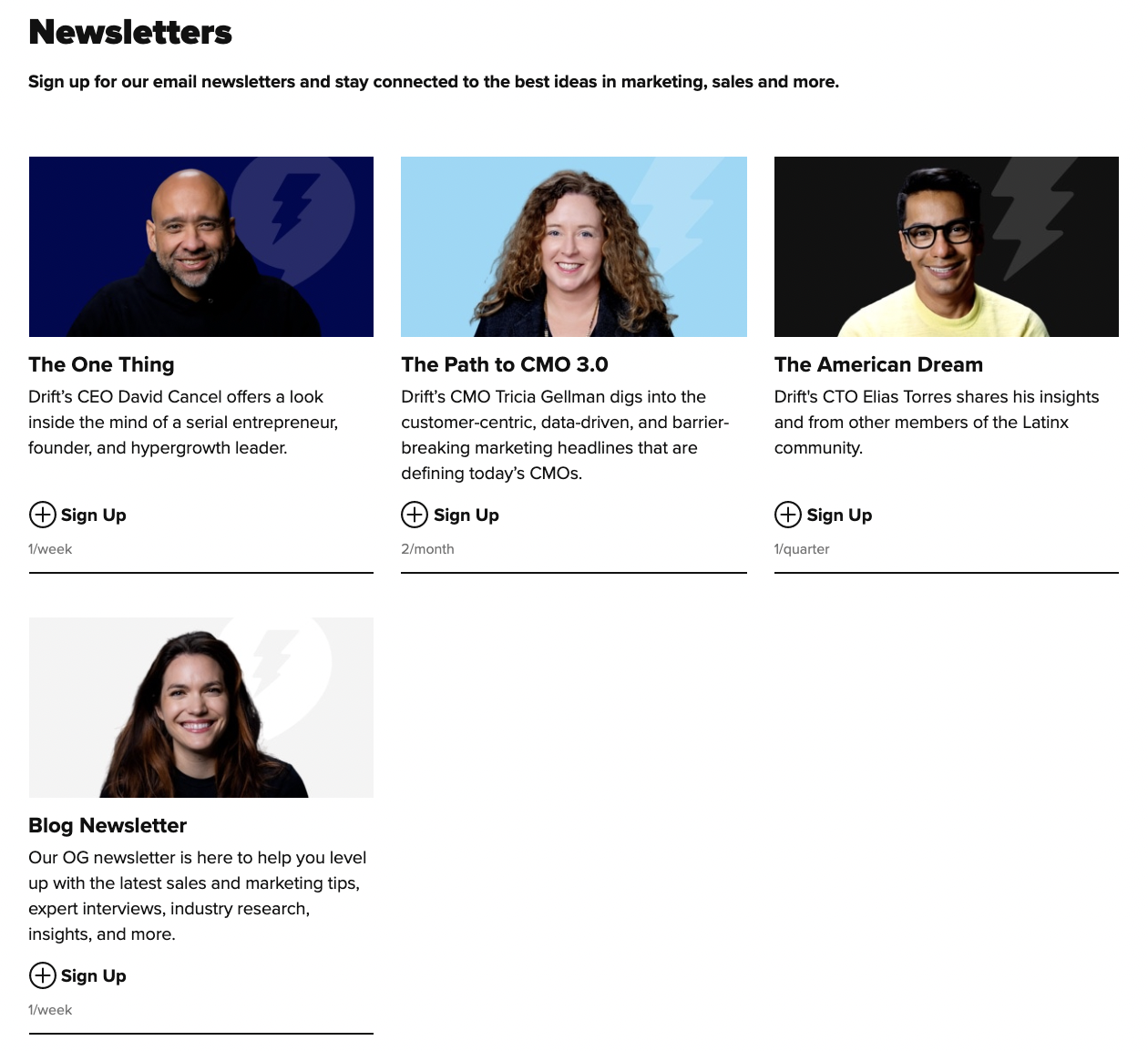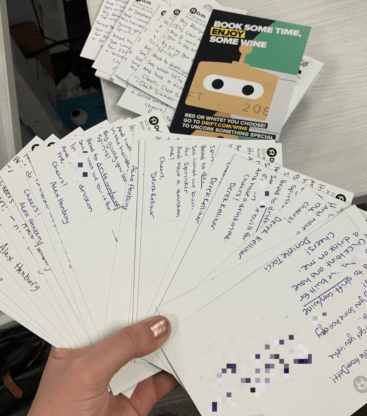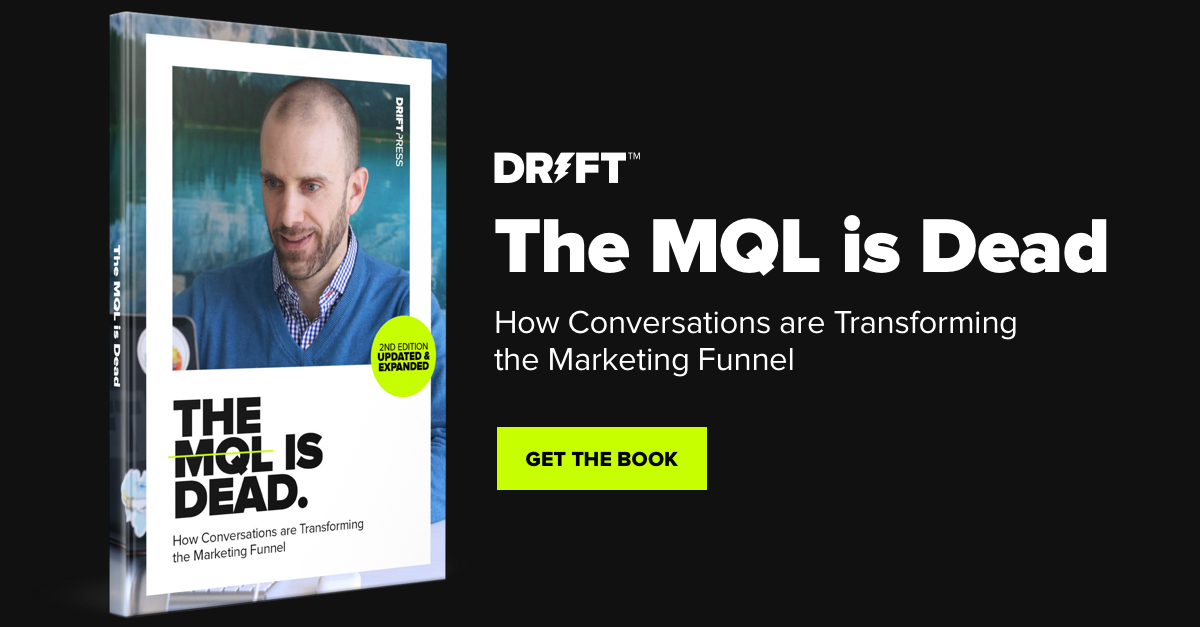Ready for a throwdown between a postcard and an IG post?
Just kidding. It’s a multichannel world, so there’s no need for just one winner in the battle of digital marketing versus traditional marketing.
51% of companies use at least eight channels to interact with their audience and customers. While digital marketing continues to grow and enjoy a larger share of the budget, traditional marketing channels persist for all types of businesses.
And since 44% of customers visit a brand’s website after receiving mail from the company, it’s clear that traditional channels and digital channels can work well together.
In this post, we’re diving into definitions, advantages, and disadvantages of both forms and how they can help your marketing team accelerate revenue.
What Is Digital Marketing?
Digital marketing is the use of online platforms to promote products and services. These online platforms can include social media, paid advertising, blogging, and more.
Digital ad spend in the US is expected to increase by 85% between 2018 and 2023. That’s because humans everywhere are increasing their screen time, and digital advertising enables marketers to target exactly who they’re looking for, not just based on their location, gender, or other basic factors. But also their purchase behavior, recent site activity, known interests, and more.
What Are Some Examples of Digital Marketing?
Let’s take a look at some specific examples of digital marketing at work.
Live Chat
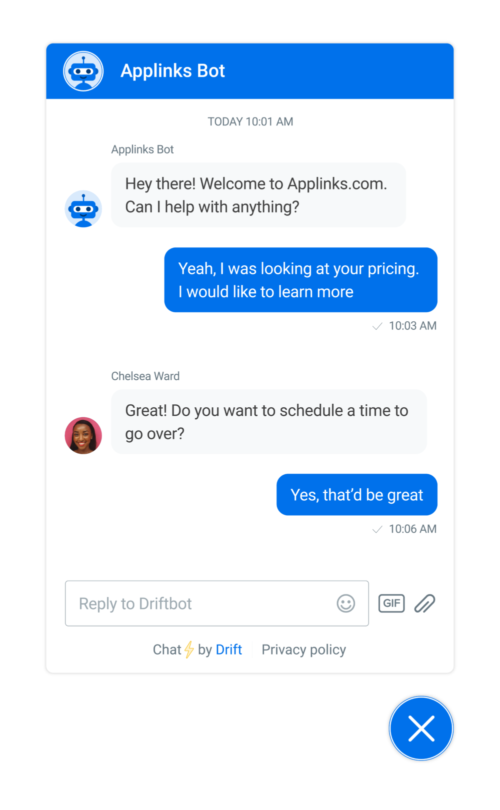
Live chat is an online service that allows businesses to have conversations with their website visitors and customers in real-time. Because let’s face it. The way people research and buy from companies has evolved, sales and marketing teams now use live chat to convert buyers and delight their current customers.
Live chat allows you to:
- Connect with buyers on their terms
- Engage with more qualified buyers
- Book meetings and demos faster
- Shorten the sales cycle
- Lower costs
Learn more about live chat and see what Drift looks like on your site right here.
Conversational Marketing
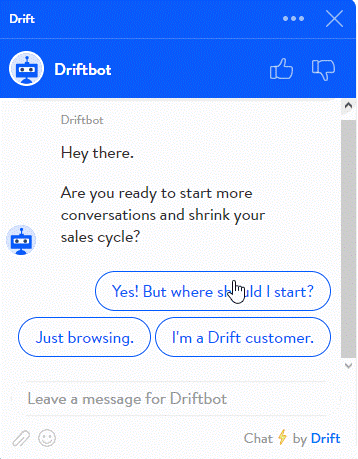
Conversational Marketing is the fastest way to move buyers through your marketing and sales funnels through the power of real-time conversations. It builds relationships and creates authentic experiences with customers and buyers.
Instead of forcing people to go through lead capture forms and wait days for a response, Conversational Marketing uses targeted messaging and intelligent chatbots to engage with buyers when they’re on your website. (And don’t worry – if you can’t give up your forms, you can still use solutions like Drift Fastlane to drive more pipeline from your lead forms.)
Engage with the right buyers, at the right time, every time. Get started with Conversational Marketing Software now.
Organic Social
One out of every six minutes that the average person spends online is spent on Facebook. Instagram, Twitter, LinkedIn, TikTok, YouTube, Snapchat, and Pinterest are all popular platforms as well. Marketers create content on their company profiles, personal profiles, and groups to attract their target audience.
Paid Social
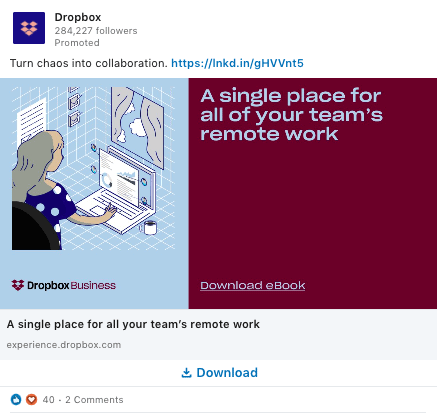
With billions of users on social media, companies want to access that attention. Popular paid social advertising platforms include Facebook, Instagram, LinkedIn, and YouTube.
Blogging
Better content can drive traffic to a blog by 2,000%. When done right, blogging and other forms of content marketing can drive traffic via SEO, direct hits to the site, social media shares, and direct person-to-person sharing.
Paid SEM
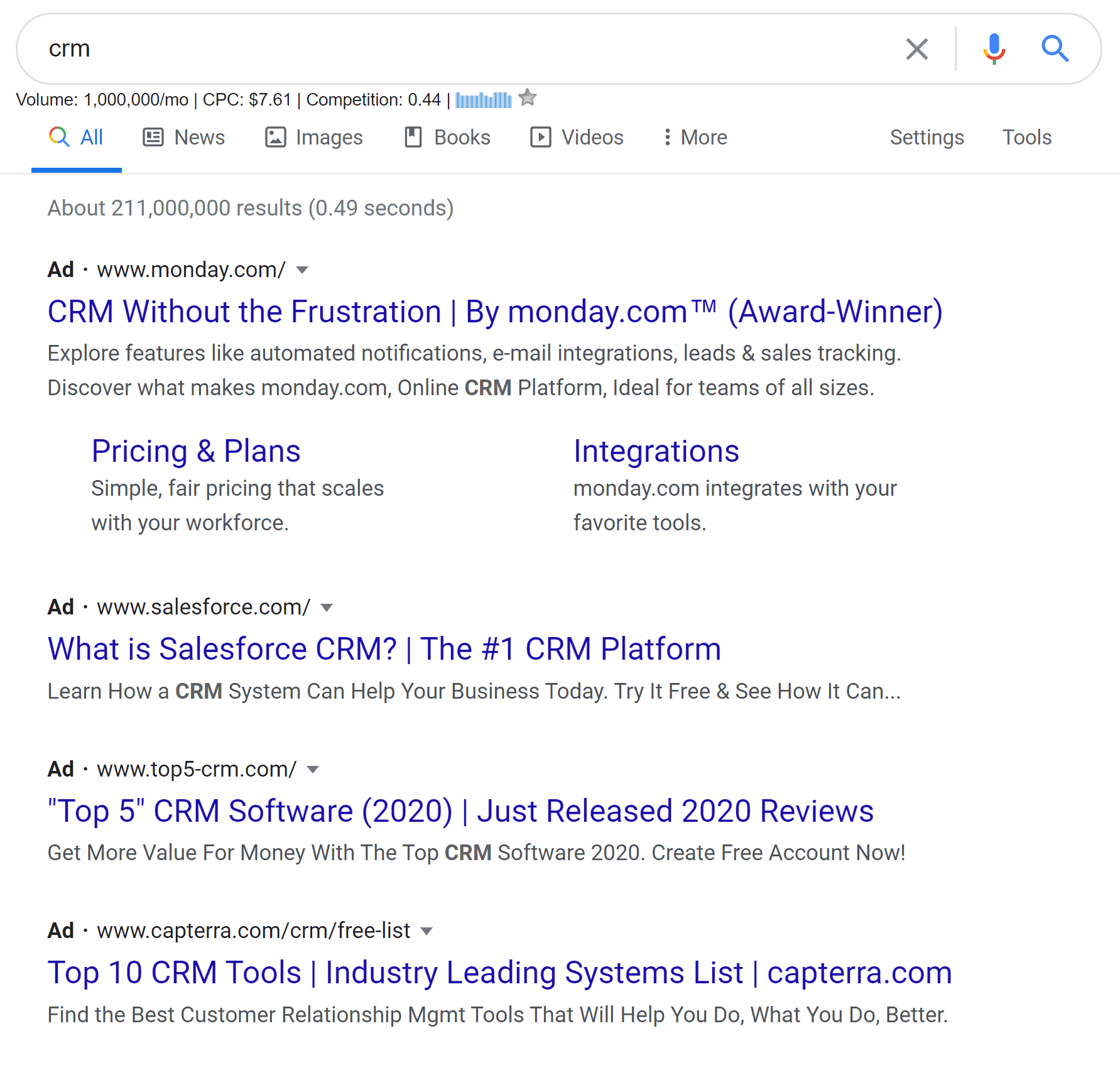
By placing ads for high-value search terms, businesses can show up to their target audience when they’re searching for solutions to a problem, exploring competitors, and getting ready to make a purchase decision.
Podcasting
Podcasting is a popular digital marketing tactic with B2B companies across the spectrum, from eCommerce companies to software providers. When brands don’t want to tackle hosting their own podcast, they can also sponsor popular podcasts in relevant niches.
Drift has 6 podcasts – for marketers, operations pros, product managers, growth experts, diversity advocates and allies, and people who want to get better every single day. Check them all out here.
Webinars
Webinars are a very scalable digital marketing tactic. Unlike an in-person event, where you need to have enough seats, water, and snacks (not to mention the challenges and complexities of a post-COVID-19 world), with a webinar, you can get hundreds or even thousands of participants – without worrying about anything other than the maximum registration on your webinar software plan.
Virtual Events
There are so many other types of virtual events besides webinars. There can be virtual summits with guest experts, panel speaker events, or other fun and creative events. (And even though the world is opening back up, virtual events are here to stay. So get The Ultimate Guide to Virtual Events Management and turn your next virtual event into one they won’t forget.)
Email Newsletters
Virtual events weren’t the only marketing channel that surged during the pandemic. Email newsletters experienced what can only be described as a rebirth. And it’s no wonder. There’s a 2017 Adobe study that found people spend more than five hours on email every day. We can only assume this number has increased during COVID and beyond. We predict brands will continue to invest in email newsletters. Why? Because they work.
What Companies Should Choose to Do Digital Marketing?
To be blunt: pretty much every business today should be doing some form of digital marketing. On average, Americans spend 6 hours and 40 minutes on the internet every day, and ideally, as a marketer, you’d like for some of that time to be spent on your brand.
The benefits of digital marketing are many, but it does have a lot of downsides, especially when the wrong types of businesses jump into the digital space and start wasting time and money. (I mean…wehen was the last time you visited your dentist’s social media profile?)
Advantages:
- Highly scalable
- Allows for very specific audience targeting criteria
- Bigger potential for audience engagement
- Fast feedback loop
- More easily attributable
Disadvantages:
- Can be wasteful for some types of businesses that would do better with direct marketing (e.g. small, local businesses)
- As digital advertising costs rise, traditional methods that get left behind can actually help generate higher ROI
Fortunately, a great marketing strategy includes traditional methods too. Let’s take a look at what they are.
What Is Traditional Marketing?
Traditional marketing consists of those channels which existed before all of the new digital channels available to us.
Traditional marketing often gets split into two theoretical camps:
- ATL – Above the line. Reaches more people than the target audience via high-reach channels such as billboards, TV ads, and radio ads.
- BTL – Below the line. Seeks to reach only people within the target audience via direct mail, sponsorships, and guerilla campaigns.
What Are Some Examples of Traditional Marketing?
While not exhaustive, here are plenty of examples of different types of traditional marketing.
Direct Mail
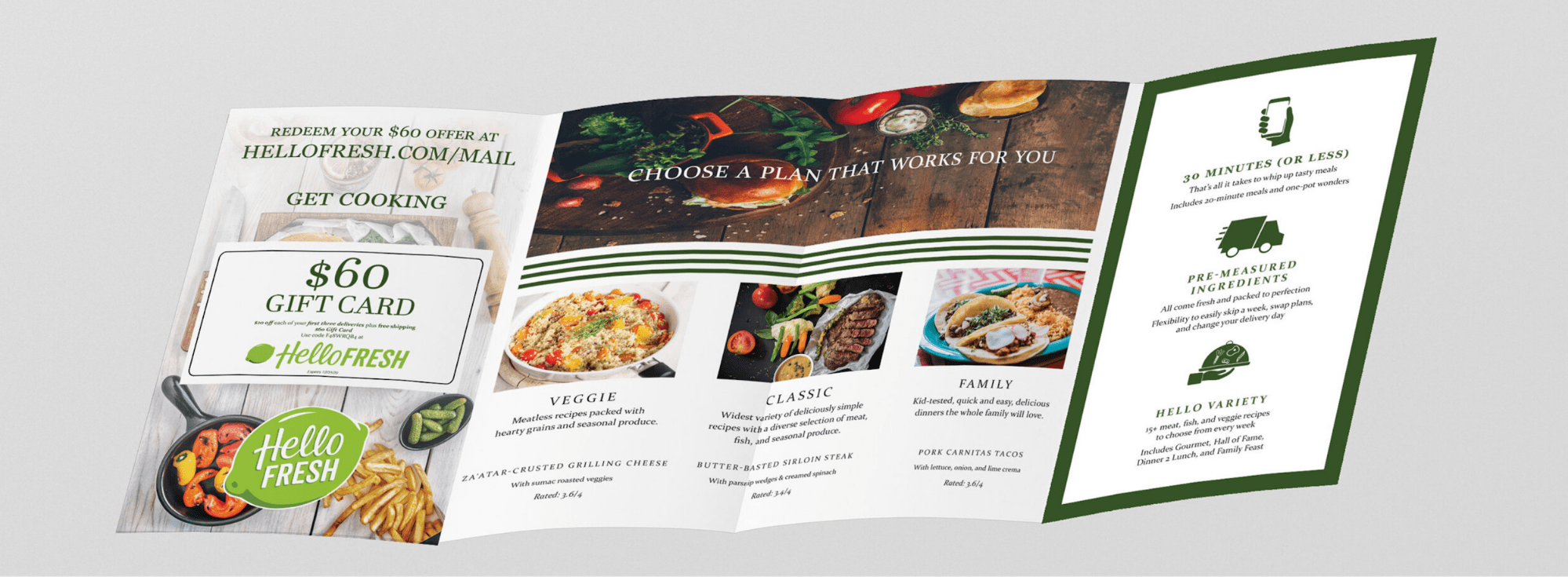
Image Source
79% of US households read or scan the direct mail they receive. People want to know about great details and local offers. While direct mail is primarily used for B2C marketing, it can be effective in a B2B setting if you can get your mail into the hands of the decision-maker. If your audience is a small business owner with a physical address, you don’t have to worry so much about an office manager tossing your postcard.
Bulky mail is also a great option, since employees typically won’t throw away packages not addressed to them.
Billboards
Billboards can be a smart way to grab attention in a specific metro area. They increase brand recognition and loyalty while also serving to expand brand awareness.
TV Ads
Remember this Slack TV ad? By putting animals at work in an office, they created a simple but attention-grabbing way to explain their communication tool to the general public.
Conferences
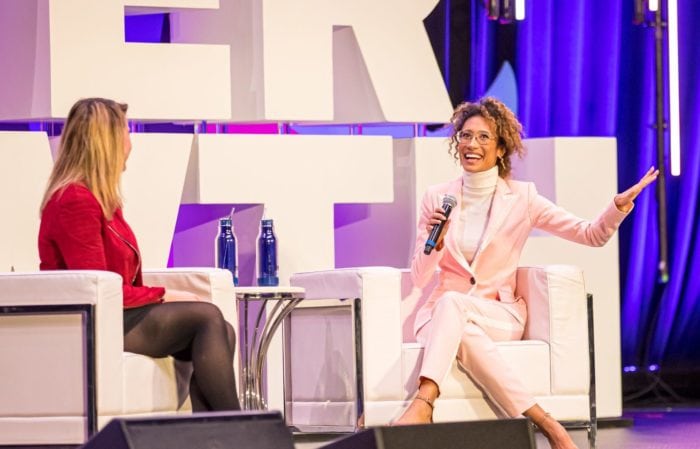
In-person conferences have been around for decades, well before the internet. While today’s conferences utilize specialized networking apps and QR codes and other gadgets, the human element, and bringing like-minded people together (and safely, might I add), is what really counts.
Meetups and Workshops
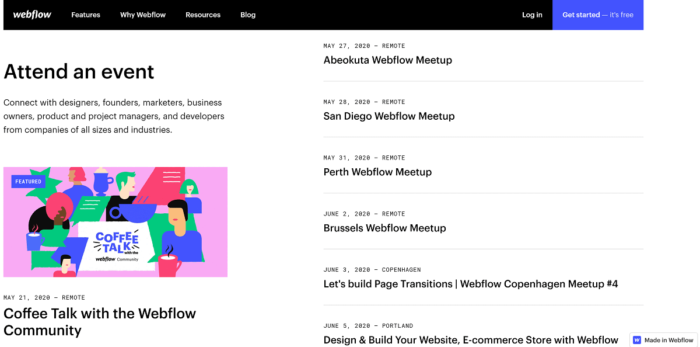
Aside from big conferences, small live workshops and events like these Webflow Meetups, are also a smart way to attract new customers and retain old ones.
Guerilla Campaigns

Image Source
A guerilla marketing campaign is anything that is unusual, tactile, and can be experienced in person. This tactic is more commonly used by big B2C brands, who want to target the population at large, not highly specific groups of people. But when done right, B2B brands can use this tactic effectively, too.
Sponsorships
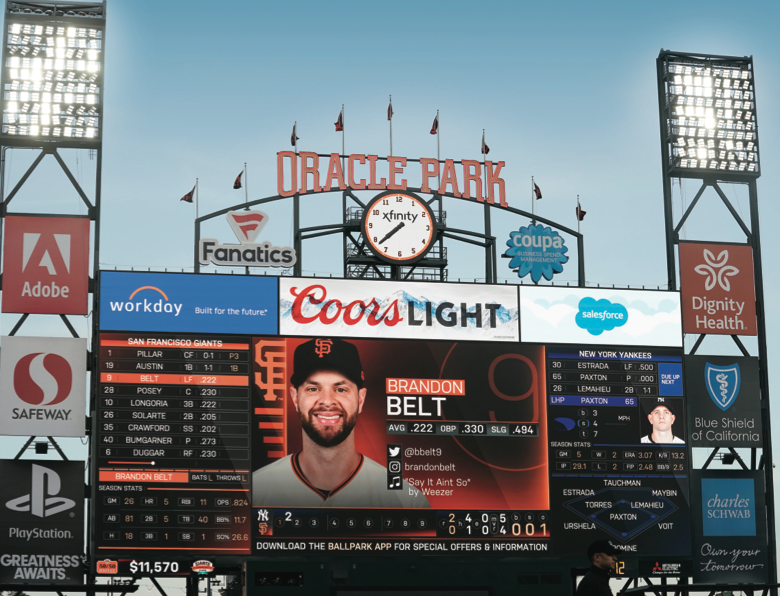
Image Source
Sponsorships are another smart way for both B2B and B2C brands to drive awareness and recognition. Just check out Adobe, Safeway, PlayStation, and others sponsoring the San Francisco Giants.
Referral Campaigns
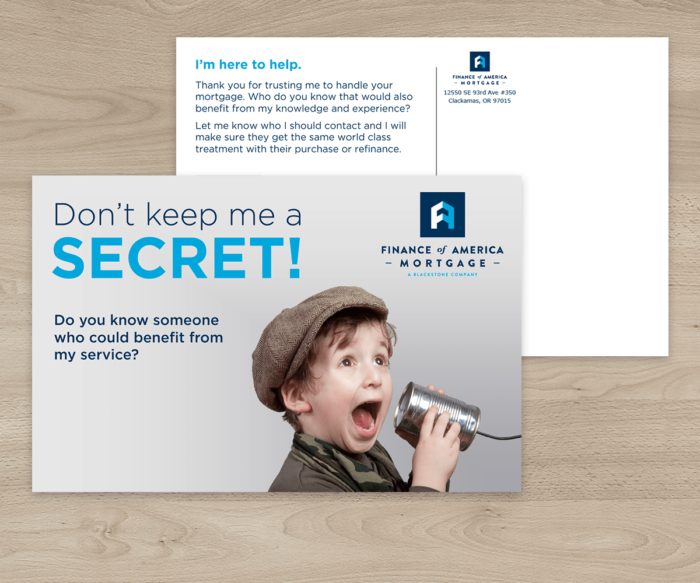
Image Source
Referral campaigns can be spread using any channel—social media, email, in-product. But traditionally, they were frequently promoted using direct mail. And today, many traditional businesses such as medical offices and mortgage lenders still use postcards to generate referrals.
What Companies Should Choose to Do Traditional Marketing?
While in today’s world, nearly every company should do some form of digital marketing, the same can’t be said for traditional marketing.
The answer as to who should tackle traditional marketing comes down to a few key points:
- Location – Do you want to target people in a specific location?
- Budget – If you serve people in multiple locations, can you afford to target them all? Can you afford to spend on brand awareness (not directly attributable to marketing)?
- Opportunity – For whatever reason, is there an opportunity to zig while your digital-obsessed competitors are only zagging?
Let’s take a look at some of the overall pros and cons of traditional marketing.
Advantages:
- Unparalleled brand authority and awareness
- Can be broad (billboards) or very targeted (direct mail to certain households or businesses)
Disadvantages:
- Costly to scale
- Slow feedback loop
- Little to no opportunity for customer engagement
Digital Marketing vs. Traditional Marketing: The Top Differences
Now that we understand what these two forms of marketing are, let’s take a deeper dive into what makes them different, aside from the fact that one is digital and one is not.
The digital nature affects a whole lot more than where the brand message shows up.
- Target audience – With traditional marketing, it’s fairly easy to reach people in certain locations and of certain demographics. However, digital marketing allows for global reach while also better narrowing the targeting towards interests and other specific attributes.
- Audience engagement – With digital marketing, people can reply to and comment on many different types of digital media and campaigns. With traditional marketing, it is a one-sided conversation.
- Cost efficiency – Traditional advertising tends to cost more and be harder to scale. The physical nature of the campaigns simply ads costs. Digital marketing provides a better range of options for affordability and resource requirements. (For example, organic content marketing has labor costs but not placement costs.)
- Speed of results – With traditional marketing, it can take longer to know the efficiency of a campaign. A digital ad gives an immediate click-through rate, but with traditional marketing, you’re waiting for the phone to ring or someone to come into the shop.
- Attribution and decision making – It can be much harder to attribute the success of new sales to a traditional campaign than to digital media. This is why traditional marketing is often used for brand building versus direct sales.
- Audience feedback loop – With more of an open line of communication with digital marketing, it’s easier to know how customers are responding to a campaign. With traditional marketing, brand managers are often just waiting and hoping they don’t get negative feedback in the form of a tweet that goes viral. This is why more money and energy is poured into focus groups and market research previous to launching a big traditional campaign. By the time a traditional campaign actually reaches its target audience, it’s typically too late to fix flubs.
Why Digital Marketing and Traditional Marketing Often Go Head to Head
Why do digital marketing and traditional marketing get pitted against each other so often? In part, it’s because of marketers.
In-house marketers might have a preference based on what’s worked at brands they’ve been with in the past. Marketing agencies are skewed towards the services they provide. Gurus lean heavily towards the methods they teach.
But preference isn’t the only story. Billboards can cost around $2,500 per month per each placement. In big cities, the monthly cost can soar to $25,000 per placement. And TV ads can cost tens of thousands of dollars when adding up production and media buying.
Both forms of marketing can work well, however SMBs tend to not perform well with costly traditional methods (unless they only serve a small location and can afford high visibility within that market).
Because of the high costs of traditional marketing and the challenges of targeting specific audiences, traditional marketing is down.
This chart of budget predictions shows that while spend for most traditional methods will decrease, spend for digital will go up.
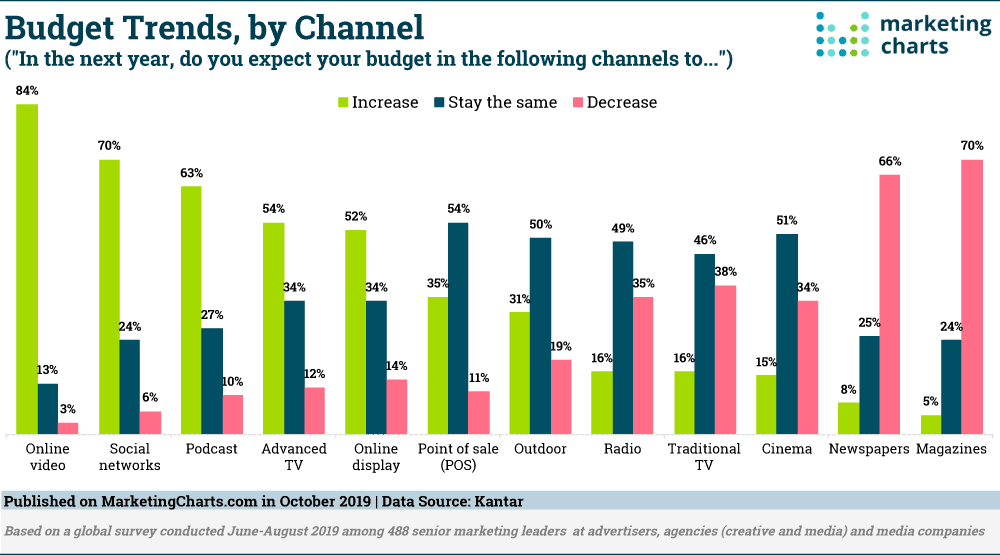
Image Source
Even though traditional marketing continues to trend down and digital marketing continues to trend up, both are worth considering. And they can even work well together.
How Do Traditional Marketing and Digital Marketing Work Together?
This isn’t an all or nothing scenario. These forms of marketing get along great.
By digitally sharing traditional campaigns, you can take your offline marketing and promote it online.
You can retarget website visitors who navigated to the landing page you put in your direct mail postcard. So while the relationship might begin offline, you can then take it online with different forms of retargeting.
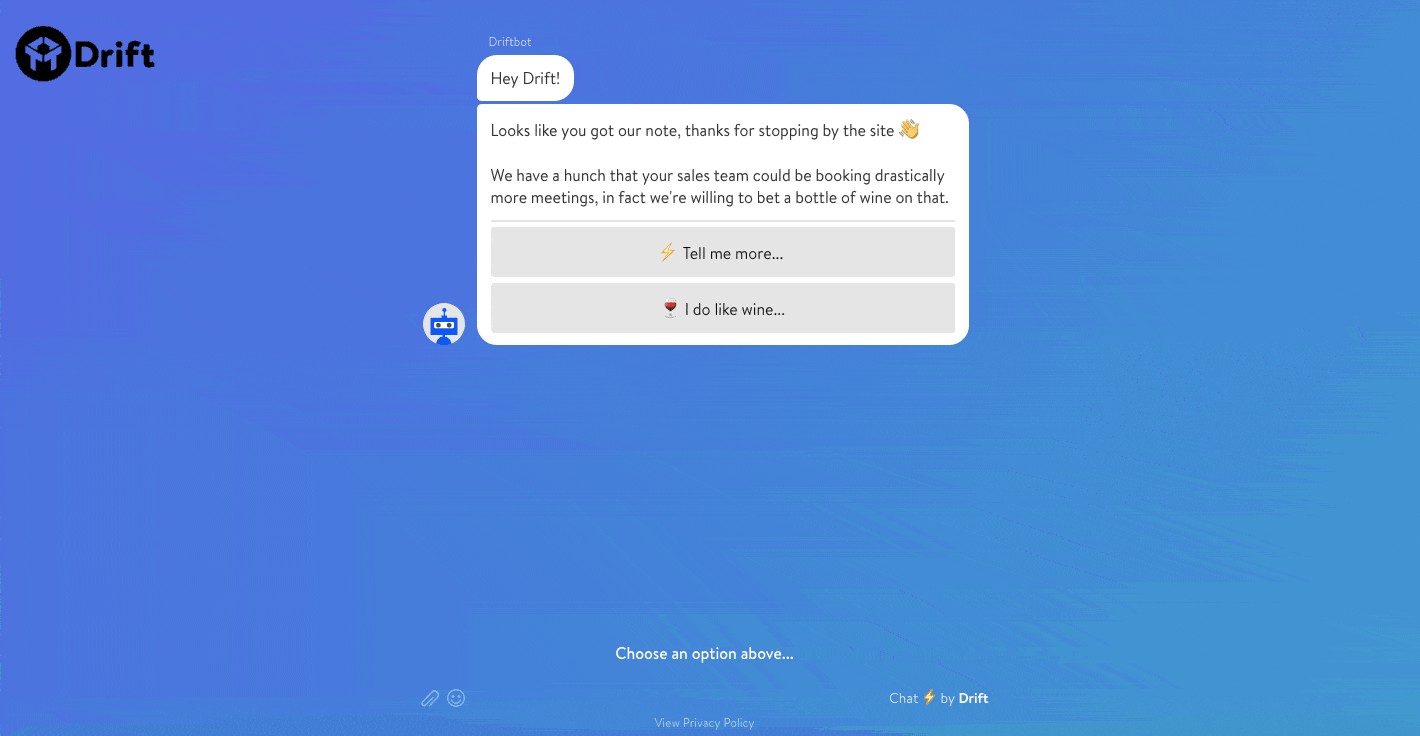
Do you do multichannel ABM? In addition to cold calling, cold emailing, and digital advertising for your top accounts, you can also send bulky mail to ideal customers, like we did when we teamed up with Marketo and sent peanut butter and jelly jars to some of our target accounts.
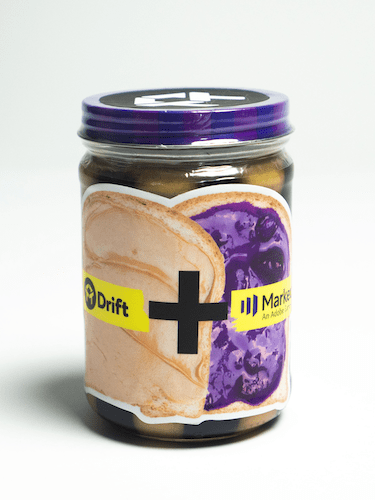
How to Discover Which Marketing Methods Will Work for Your Company
With so many channels and methods available, it can be difficult to know which to choose. Marketers get shiny object syndrome. Distraction and overwhelm keep us behind.
You want to reach your target customers consistently without taking on more than you can chew.
The question is how?
Try the ICE method (impact, confidence, ease) to score different marketing channels by how they will impact revenue, how confident you are that your team can execute on them, and how easy it will be to execute them.
Each channel, strategy, or campaign idea gets a score from 1-10 for each variable. Then add up the scores and see which 3-5 concepts come out on top.
And of course, test to see what works, and strive to make attribution as accurate as possible so you can make changes to your strategy as you go.
Ready to transform the way you think about sales and marketing? Download the ebook today and discover how conversations are transforming the marketing funnel as we know it (and what you can do about it).
Editor’s Note: This article was published in June 2020 and has been updated to reflect new information.





